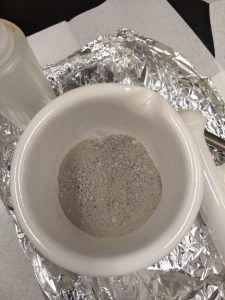Mining waste could provide a reliable supply of rare earth elements, including neodymium and dysprosium, from a type of mining waste called phosphogypsum – a product of making phosphoric acid from phosphate rock for fertilisers – according to the Idaho National Laboratory (INL).
More than a billion tons if such waste is sitting idle in the US, it said, and about 100,000 tons of rare-earth elements end up in phophgypsum waste across the world each yea: “That’s almost as much as the nearly 126,000 tons of rare-earth oxides produced worldwide each year.”
Before anyone gets too excited, Yoshiko Fujita (pictured) of the lab warns that this kind of wastes often mildly radioactive. “There are typically uranium and thorium in these phosphate deposits,” she said. “But there are some deposits that are low in these elements.”
However, there is enough interest that companies are already looking into re-processing phosphogypsum waste.
 A sulphric acid process works best, but the Idaho lab has an alternative: a mixture of chemicals produced by the bacterium gluconobacter oxydans, commonly found in the environment, including on rotting fruit. The extraction process is a form of ‘bio-leaching’. “With bio-leaching, we are using an organic acid that is less harmful to the environment,” Fujita said.
A sulphric acid process works best, but the Idaho lab has an alternative: a mixture of chemicals produced by the bacterium gluconobacter oxydans, commonly found in the environment, including on rotting fruit. The extraction process is a form of ‘bio-leaching’. “With bio-leaching, we are using an organic acid that is less harmful to the environment,” Fujita said.
The bacterial mixture has already proved better at extracting rare earths than either phosphoric acid or gluconic acid used alone – gluconic acid is one of the chemicals made by gluconobacter in its mixture.
 This was proved by the lab by doping synthetic phosphogypsum with six rare-earth elements – yttrium, cerium, neodymium, samarium, europium and ytterbium – then trying various techniques to get them out again.
This was proved by the lab by doping synthetic phosphogypsum with six rare-earth elements – yttrium, cerium, neodymium, samarium, europium and ytterbium – then trying various techniques to get them out again.
INL has previously used gluconobacter to recover rare earths from spent ‘fluidised catalytic cracking catalyst’ – petroleum refining waste – amongst other potential sources.
“Earlier studies have shown that using Gluconobacter for bioleaching can be economically viable and cause fewer impacts on the environment, especially when compared with sulphuric acid,” said the Lab. “Conventional methods to extract rare-earth elements from ores generate millions of tons of toxic and acidic pollutants.”
Source: electronicsweekly











29 thoughts on “Mining Waste: Bacteria Extract Rare Earths Element”